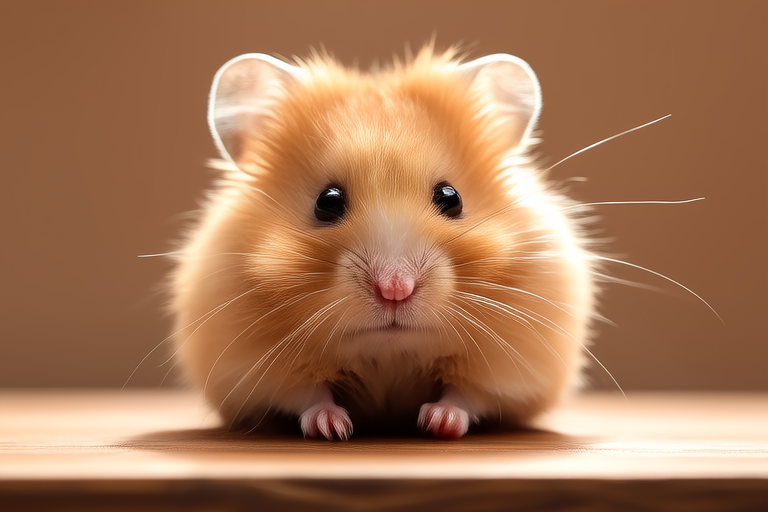Unveiling the Tiny Dynamo: All You Need to Know About Roborovski Hamsters
Welcome to the fascinating world of Roborovski hamsters! These charming creatures are the smallest of all hamster species, earning them the nickname “tiny dynamo.” In this comprehensive guide, we’ll explore their origins, physical traits, behaviors, dietary needs, housing requirements, exercise necessities, common health issues, and essential tips for new owners. Let’s dive into the captivating universe of these pint-sized pets.
The Origin of Roborovski Hamsters
Roborovski hamsters, scientifically known as Phodopus roborovskii, were discovered in the early 20th century by Russian zoologist Liudmila Markovna Gureeva in the deserts of Mongolia and Kazakhstan. They are named after Russian explorer Lt. Vsevolod Roborovski, who led the expedition where these hamsters were first found. Originally, they lived in harsh desert environments, which has equipped them with remarkable adaptations.
Physical Characteristics
One of the most striking features of Roborovski hamsters is their petite size. They typically measure only about 4 to 5 inches (10 to 13 cm) from head to tail and weigh around 20 to 30 grams. Their diminutive stature makes them incredibly agile and quick, often darting around their enclosures with surprising speed. Their coats can range from sandy brown to light grey, complemented by white bellies and distinctive dark patches around their eyes.

Another distinguishing feature is their short tails, which are almost invisible compared to other hamster species. Additionally, Roborovski hamsters lack cheek pouches, which sets them apart from their larger cousins like Syrian hamsters. This adaptation suggests they evolved to carry food directly to their burrows rather than storing it temporarily in their cheeks.
Unique Behaviors
Roborovski hamsters are known for their high energy levels and playful antics. They are active during the twilight hours, making them crepuscular animals, which means they are most active at dawn and dusk. Their natural habitat in the desert has made them adept at digging complex burrow systems, a behavior they continue to exhibit in captivity.
These tiny dynamos also display social behaviors, sometimes living in small groups in the wild. However, they can be territorial and may show aggression towards newcomers or when space is limited. In captivity, it’s advisable to provide each hamster with its own enclosure to prevent conflicts.
Dietary Needs
Roborovski hamsters have specific dietary requirements to maintain their health and energy levels. A balanced diet includes a mix of seeds, pellets, fresh vegetables, and occasional fruits. High-quality commercial hamster food formulated specifically for Roborovski hamsters ensures they receive the necessary nutrients.
Fresh water should always be available, preferably in a sipper bottle designed for small rodents. Avoid feeding them foods high in sugar or fat, as these can lead to obesity and other health problems. A varied diet rich in fiber helps keep their digestive system healthy and prevents issues like diarrhea.
Housing Requirements
Due to their energetic nature, Roborovski hamsters need spacious enclosures that allow ample room for running and exploring. A cage measuring at least 24 inches long, 18 inches wide, and 12 inches tall provides adequate space. Multi-level cages with tunnels and platforms enhance their environment and encourage natural behaviors.
Substrate is crucial for maintaining hygiene and providing comfort. Aspen shavings or paper-based bedding are safe and absorbent options. Avoid cedar or pine shavings, as they can irritate your hamster’s respiratory system. Regular cleaning of the cage, including changing the bedding and sanitizing accessories, is vital to prevent infections.
Exercise Necessities
Roborovski hamsters are highly active and require regular exercise to stay healthy. In addition to a spacious cage, providing toys and exercise wheels is essential. Wheels with solid surfaces are safer for their feet compared to wire ones. Introducing tunnels, chew toys, and platforms within the cage stimulates their natural instincts and keeps them mentally engaged.
Supervised playtime outside the cage in a secure area is beneficial but should be limited to prevent stress or accidents. Ensure the play area is free from hazards such as open spaces, toxic plants, and small gaps where they could get stuck.
Common Health Issues
Like any pet, Roborovski hamsters can face various health challenges. Some common issues include dental problems, respiratory infections, and gastrointestinal disorders. Overgrown teeth can cause discomfort and difficulty eating; regular check-ups with a veterinarian specializing in exotic pets can help monitor and manage this condition.
Respiratory infections, often caused by poor ventilation or damp conditions, require prompt veterinary attention. Symptoms include sneezing, wheezing, and discharge from the nose or eyes. Maintaining proper humidity levels and ensuring good air circulation within the cage can reduce the risk of these infections.
Tips for New Owners
If you’re considering bringing a Roborovski hamster into your home, here are some tips to ensure a smooth transition:
- Research thoroughly: Understand their specific needs before committing to ownership.
- Choose the right enclosure: Ensure it’s spacious enough for them to move freely.
- Provide enrichment: Toys, tunnels, and platforms keep them mentally stimulated.
- Monitor health closely: Regular vet visits and observing behavior for changes can catch issues early.
- Be patient: These little dynamos might take time to adjust to their new surroundings.
With proper care and attention, Roborovski hamsters make delightful companions. Their unique combination of agility, charm, and adaptability makes them a favorite among hamster enthusiasts. By understanding their origins, physical characteristics, behaviors, dietary needs, housing requirements, exercise necessities, and common health issues, you’ll be well-equipped to provide the best possible life for these tiny dynamos.
